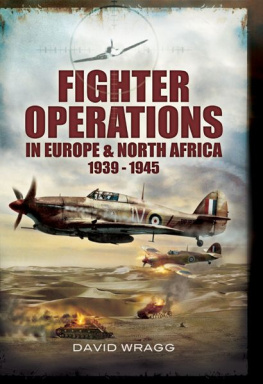

This edition is published by PICKLE PARTNERS PUBLISHINGwww.picklepartnerspublishing.com
To join our mailing list for new titles or for issues with our books picklepublishing@gmail.com
Or on Facebook
Text originally published in 1997 under the same title.
Pickle Partners Publishing 2014, all rights reserved. No part of this publication may be reproduced, stored in a retrieval system or transmitted by any means, electrical, mechanical or otherwise without the written permission of the copyright holder.
Publishers Note
Although in most cases we have retained the Authors original spelling and grammar to authentically reproduce the work of the Author and the original intent of such material, some additional notes and clarifications have been added for the modern readers benefit.
We have also made every effort to include all maps and illustrations of the original edition the limitations of formatting do not allow of including larger maps, we will upload as many of these maps as possible.
THE CINDERELLA FRONT: ALLIED SPECIAL AIR OPERATIONS IN YUGOSLAVIA DURING WORLD WAR II
by
Major Paul J. Freeman
Preface
In this short work I have tried to bring to light a few of the many fascinating lessons of air operations in Yugoslavia in World War II. Many people, if not most, know nothing of the dangerous missions and courageous individuals who undertook this unconventional warfare. My hope is that this research will draw one to read more about the special warriors who flew into the darkness over enemy territory for the Allied war effort.
This paper views these operations from the perspective of coalition warfare. Today, just as in 1942, the significant conflicts that threaten US survival require forces only coalitions can generate. Since coalitions are difficult to build and even harder to maintain, I believe study of the Mediterranean theater and Yugoslav operations will prove valuable. The deliberations of strategists like Winston Churchill and Dwight Eisenhower guided events crucial to the immediate war effort, ultimately shaping the post-war world.
I greatly appreciate the contribution of Dr. Matthew R. Schwonek, Air Command and Staff College. He gave me my first insights into the importance of these little-known operations and unending help and encouragement in uncovering historical documents. He inspired me to see these operations, not from the point of view of troops and squadrons on a campaign map, but from the eyes of Partisan soldiers, Allied agents, and aircrews struggling to find a drop zone on a rainy, mountain night.
Abstract
This research paper examines how special operations were conducted in Yugoslavia during WWII; how did the operational art conducted fit into Allied grand strategy; and how effective were these operations? These operations were conducted using multinational, coalition forces, and for this reason the lessons from this examination are relevant to warriors today.
Conducting military operations almost always involve a scarcity of forces. This scarcity forces difficult decisions in development of strategic goals and conduct of operations. This difficulty is further compounded when coalition forces involve multiple nations, each with their own priorities. This is the situation that existed in WWII. The US wanted a concentrated invasion of NW Europe, while Britain and Russia were interested in a multi-front battle of attrition against the Axis, featuring a Balkan invasion. There were inadequate forces to commit to an invasion of the Balkans, but there was an opportunity to divert Axis strength from other fronts. This paper will look at Allied operations in Yugoslavia (typical Balkan operations) and analyze: 1.) the unique contextual factors influencing special operations in the Balkans during WWII, 2.) operational art factors of this unconventional employment of airpower in the politically divided region, and 3.) the success and/or failure of military planners and commanders in deriving military from strategic objectives and in attaining these objectives.
The methodology used is to outline Allied operations from: 1) a brief explanation of the development of grand strategy within a coalition of forces, to 2) discussion of air power and joint force employment in Yugoslavia, and 3) draw conclusions as to the effectiveness and relevance of this strategy and the related operations for todays warrior. The analysis and conclusions will examine the logic and congruence of these operations to the respective strategy and will highlight contextual influences (aircraft and equipment capabilities, weather, logistics) on the success of these operations to meet the strategic objective.
Chapter 1 Introduction and Background
In early 1942, as Hitler s Axis tightened its grip across the breadth of Europe, Russian blood stained the snow near Moscow; Britain and Frances desperate attempts to match Axis armament programs had been too little, too late; and a US presence had yet to be felt. There was little reason for optimism, but there was unity of purpose among these nations united against the Axis. The Axis could only be defeated by forming a coalition of nations through a long struggle of mobilization, force projection and finally decisive military engagement to force a final solution.
Few military operations have the luxury of abundant resources. Resource constraints force difficult decisions in the development of strategic goals and the conduct of operations. This difficulty is further compounded in coalition warfare, where each member is needed, but not all are friends. This is the situation that existed in WWII. The US wanted a concentrated invasion of north west Europe while Britain and Russia pushed for a multi-front battle of attrition against the Axis. While not delivering the death blow, Allied operations in North Africa, Italy, France and the Balkan countries of Greece, Albania, Macedonia, Yugoslavia, Bulgaria, and Romania played an important role in the execution of Mediterranean strategy and the final defeat of Germany.
Operations in the Balkans progressed from extremely limited special operations beginning in March 1942 to extensive, joint military operations through the collapse of Germany in May 1945. Although not the decisive front, Balkan operations tied up a great many Italian and German troops, making Allied operations on the European and Eastern fronts more effective. The majority of these air, ground, and special operations were conducted within Yugoslavia. Because much about these operations remained secret throughout the war, valuable lessons and stories of courage, innovation, and determination have remained largely unseen in the dusty pages of military archives. This paper explores Allied special air operations in Yugoslavia in World War II to illustrate lessons relevant to warfighting today.
This paper will focus on Yugoslavian operations in order to illuminate three important lessons from the Cinderella front. First, today, as in WWII, multinational, coalition warfare is essential to the successful defeat of any significant adversary. Ensuring congruency of strategy with military objectives is critical to attaining the desired end state and is greatly influenced by the complex contextual environment presented in coalition warfare. Secondly, Allied operations in Yugoslavia in WWII highlighted the value of special operations forces and demonstrated the capability of even limited forces to assist in achieving strategic objectives when employed in coordinated, multinational, joint operations. Finally, three operations will be summarized to bring to light the value and limitations of these WWII coalition operations that are directly applicable to US military operations today.









